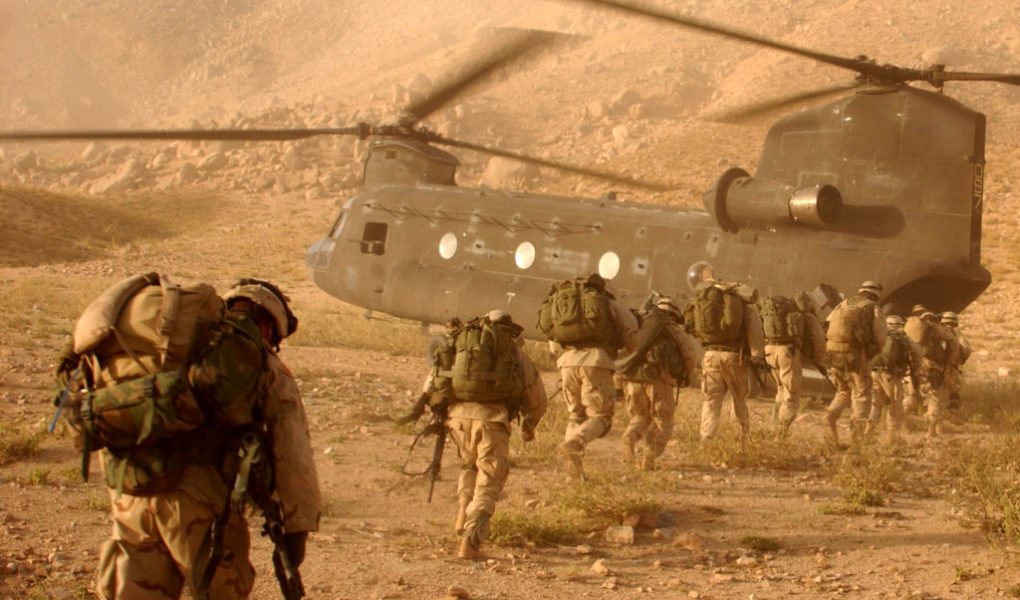While air defenses, missiles, and drones congesting the Ukrainian sky receive the most public attention, an underdiscussed aspect of the conflict is the clear demonstration that effective helicopter operations are still vital to modern warfare.
Faced with a multitude of threats, from increased competition with Russia and China to terrorism in the Middle East, the US Army must maintain and even improve its operational capability to conduct combat helicopter operations in high-intensity conflict while retaining vital counterterrorism skills.
Russian vs. Ukrainian Helicopter Tactics
Russian and Ukrainian helicopter tactics provide contrasting examples for American pilots and defense planners to study.
Despite reportedly losing 31 helicopters and strained capacity to conduct combined arms operations, Ukraine continues leveraging its remaining fleet to conduct vital resupply, evacuation, and attack missions critical to tactical and operational objectives.
Ukrainian pilots are successful at night, employing appropriate tactics and flight discipline to engage, disable, and destroy high-value targets.
In contrast, Russian helicopter crews have exercised poor tactics and terrain flight techniques. As a result, Ukraine has damaged, destroyed, or captured at least 78 Russian helicopters, often with ground-based and shoulder-mounted anti-aircraft missiles. Those losses include 31 KA-52 single-seat attack helicopters, a third of Moscow’s in-service fleet.
These losses are largely due to Russian pilots’ failure to use terrain and appropriate flight techniques to mask and protect themselves. Those failures, coupled with the country’s inability to gain air superiority, allow the Ukrainians to destroy Russian helicopters in the air and on the ground.
Additionally, KA-52 crews’ lack of training in ballistically launching their weapons limits their ability to engage Ukrainian targets. Finally, their need to fly at higher altitudes to fire weapons, despite lacking sufficient survivability equipment, makes them juicy targets for Ukrainian defenders.
US Army Aviation Capabilities
The divergent results of Ukrainian and Russian helicopter operations are a reminder to value the US Army’s unrivaled aviation capability.
During a recent military base visit to Fort Campbell, Kentucky, JINSA National Leaders witnessed firsthand the capabilities of US Army Aviation units.
The “Night Stalkers” of the 160th Special Operations Aviation Regiment (Airborne) and the 101st Airborne Division “Screaming Eagles,” both based there, continue to set the standard for tactics, discipline, equipment, and technology to which other nations strive. These two units were the first US Army aviation units to conduct combat operations in Afghanistan in 2001 and 2002.
With America’s military operations shifting toward counterterrorism after 9/11, US Army helicopters were critical to inserting and extracting forces conducting intelligence, surveillance, reconnaissance, and operations to engage, kill, or capture terrorist targets.
In Afghanistan, Night Stalkers conducted the longest air assault raid in history on September 19, 2001, led by one of the authors, and also supported the now-famous horse soldiers from the 5th Special Forces Group.
The 160th was deployed every day of the 20-year conflict supporting high-risk operations against terrorist targets, and remains in the theater today to degrade and destroy ISIS capability.
Modernization
As America increasingly contends with near-peer competitors in Europe and the Indo-Pacific, the US Army, along with the rest of the Department of Defense, has pivoted its focus, training, and modernization efforts to enable it to fight in higher intensity, large-scale combat operations.
China and Russia watched US and coalition forces operate with devastating effects in Afghanistan and Iraq and continue to build robust anti-access/area denial capabilities. Operating in these environments requires dusting off time-tested tactics, techniques, and procedures, especially as the 101st Airborne Division headquarters is among the units in Eastern Europe deployed in response to Russia’s brutal invasion of Ukraine.
A key piece of the US Army’s transformation effort is an aggressive modernization program to field robust state-of-the-art capabilities that provide an overmatch of adversaries in large combat operations.
Future Vertical Lift capability is integral to ensuring US Army aviation remains an asymmetric advantage for the Joint Forces. Unlike the operational challenges Russia has faced against Ukraine, these new aircraft will fly farther and faster and be more maneuverable, survivable, and lethal, allowing commanders to strike targets away from enemy long-range fires.
Congress must fully fund this capability so that the US can maintain its position of relative advantage and the ability to operate whenever and wherever necessary to protect national interests.
American Way of War
Since US Army aviation has long been a lynchpin in America’s multinational coalitions, ensuring its platforms and pilots have cutting-edge capabilities is a means of improving not only American fighting capabilities but also those of its partners worldwide.
Conducting additional joint and combined exercises with foreign militaries to drill techniques, tactics, and procedures for combat aviation would further enhance the effectiveness of America’s partners as well.
As the threats America faces magnify, it is critical that US Army combat aviation adapt, modernize, and prepare to remain integral to the American way of war.
Originally published in The Defense Post.

